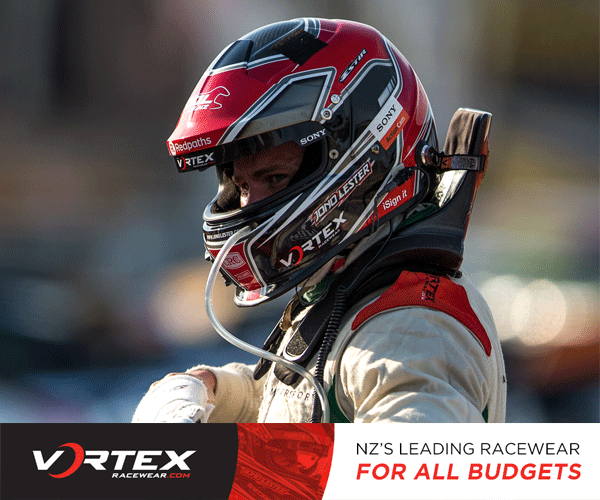Virtually every championship in motorsport has its one signature event, one which stands above all the rest in terms of prestige, history, and stature. The Indianapolis 500. The 24 Hours of Le Mans. And in Super GT, there is that one crown jewel event: The International Suzuka 1000km, Japan’s great race.
With a history dating back to 1966, the Suzuka 1000km has seen the evolution not only of motorsport in Japan, but of endurance sports car racing as a whole. Its champions are legendary. Its mystique is undeniable. It is the biggest national championship race in the country.
But, in the midst of rapid change in motorsport, this great tradition will soon end – at least, as we know it today. But not before one last grueling 1,000 kilometers at the fabled Suzuka Circuit, this weekend, in the most anticipated running of the Suzuka 1000km ever: The 46th, and final Suzuka 1000km.
It’s not just this race’s rich history, and its long distance – over three times as long as most Super GT events – that makes the Suzuka 1000km such a focal point of the Super GT championship over the past decade. It’s also by far the most crucial race in the championship for both classes. 25 points are paid to the winners, as opposed to the standard 20. Second place now pays 18 points, 15 points to the third place team and drivers, on down to 10, 8, 6, 5, 4, 3, and 2 points for the rest of the top ten.
It’s those extra points that will truly make the difference in terms of the GT500 and GT300 championship pictures. Our focus here is on GT500, saying farewell to this Suzuka summer endurance event. Despite the drastic reduction in the downforce of the GT500 cars this off-season, the increased top-end speeds mean that they could be capable of breaking their lap records from 2016, if the conditions are right in qualifying.
This year’s Suzuka 1000km will have plenty of international intrigue going for it, as 2009 Formula 1 World Champion, Jenson Button, makes his highly-anticipated sports car racing debut with former winners Team Mugen, partnering with Hideki Mutoh and Daisuke Nakajima in the #16 Motul Mugen Honda NSX-GT.
After a career at the pinnacle of single-seater motorsport, Button is prepared for the first race in which he’s ever had to drive with a roof over his head, drive in a field with two classes of cars, and share driving duties with two other individuals. Much like his McLaren F1 teammate, Fernando Alonso, when the two-time champion shook the racing world with his Indianapolis 500 debut, Button’s Super GT debut looks to have a similar effect and draw many, many new fans to a series that so richly deserves the world’s audience.
And in Japan, a country that has proven to be a second home for the native of Somerset, England, Button will be much admired as he had been all throughout his F1 career, particularly in the days of driving with Honda power.
Button isn’t the only F1 folk hero making waves with his Super GT debut at this year’s Suzuka 1000km. Enter Kamui Kobayashi, who five years ago, became only the third Japanese driver to stand on an F1 podium at Suzuka, as a raucous crowd sang his name in celebration.
Now a top star in the FIA World Endurance Championship, Kobayashi makes his GT500 debut with Lexus Team WedsSport Bandoh, and the #19 WedsSport Advan Lexus LC500, which he’ll share with regular drivers Yuhi Sekiguchi and Yuji Kunimoto. Kobayashi has been mega quick everywhere he’s raced this year – whether it’s setting the lap record at Le Mans in a Toyota TS050 Hybrid, or taking KCMG to unprecedented success in Super Formula all on his own.
On paper, the talent, and the balance of tenacious aggression and tempered consistency between the three drivers, make Masataka Bandoh’s team one to watch – as Lexus bids for a fourteenth victory for the Toyota Motor Corporation at large, the most of any manufacturer in the Suzuka 1000km.
In recent years, Lexus have dominated the Suzuka 1000km, winning the last three in a row since the start of the current two-litre turbo formula in 2014. No team has enjoyed a greater run of consistent success than the flagship #36 Lexus Team TOM’s squad, who’ve finished third, won twice, and finished second in that order over the last four years – and in total, lead all active teams with four overall victories (1987, 2007, 2014 & 2015).
Over those four seasons, the #36 car has carried no more than 44 kilograms of ballast. This year, however, the au TOM’s LC500 of Kazuki Nakajima and James Rossiter (2014’s winning driver combination) has 88 kilograms of Success Ballast on board this year, as the current GT500 championship leaders. The actual weight won’t be so much an issue, as it’s actually just 38 kilograms – but with a “Stage 3” fuel flow restrictor installed, they’ll need to maximize what they can through the high-downforce sections of Suzuka Circuit.
With a minimum five pit stops to comply with the race regulations, using the limited fuel flow to their advantage on longer economy runs won’t be a viable solution. But if any two drivers can overcome the odds, it surely must be Nakajima and Rossiter, with the experience of three-time Suzuka winner Daisuke Ito on the pit box as their first-year team director.
Also in a tricky spot for ballast is the defending champions of this race, the #38 ZENT Cerumo LC500 of two-time winners Yuji Tachikawa and Hiroaki Ishiura. Put the minor controversies of last year’s race aside, they were by far the class of the field in 2016. However, going for a third victory in 2017, Tachikawa and Ishiura won’t find it easy, as they too are fuel-flow limited.
Since the Autobacs Super GT Series introduced the Suzuka 1000km as a championship event in 2006, no team has ever won this race carrying more than 48 kilos of Success Ballast, in any permutation. However, in years past, there have been teams above that mark that have at least threatened for the win, taken podium finishes – and as a consequence, have boosted their championship bids.
As a result, for the likes of the aforementioned Lexus teams, as well as the #1 Denso Kobelco SARD LC500 (Heikki Kovalainen/Kohei Hirate), the #6 Wako’s 4CR LC500 (Kazuya Oshima/Andrea Caldarelli), and the #37 KeePer TOM’s LC500 (Ryo Hirakawa/Nick Cassidy) – in the long game, a podium finish is about as good as a victory, though still, the ultimate prize is victory – and a victory for any one of these front-running Lexus squads would well and truly put them over the top.
Nissan are the only manufacturer in GT500 that are yet to win a race in 2017, a far cry from when they entered last year’s Suzuka 1000km on a four-race winning streak. But this year, Suzuka might be the best hope for the mighty GT-Rs to finally come away with a first victory.
Their hopes were boosted when the flagship NISMO team, the #23 Motul Autech GT-R of Tsugio Matsuda and Ronnie Quintarelli, set the fastest times in the official test at Suzuka on June 30 & July 1. The recent engine upgrades, and furthered development from Michelin, strive to put Matsuda and Quintarelli closer to a victory that could vault them right up at the top of the GT500 Championship tables, and most importantly, cement the legacy of both drivers as the best of all-time.
Put the two most successful Super GT drivers together on the most successful team in Super GT history, and it seems a sure formula for a victory in Japan’s great race – even for a team that, amazingly enough, hasn’t claimed even a share of an overall win since 1993. Quintarelli is one of four drivers going for their third Suzuka 1000km win this year, along with Rossiter, Tachikawa, and Ishiura.
That said, it could be the other Michelin-clad Nissan GT-R, the #46 S Road Craftsports GT-R of Satoshi Motoyama and Katsumasa Chiyo, that could win the day for Nissan.
Chiyo, of course, missed this race a year ago with a back injury, after winning the GT300 class in emphatic fashion in 2015. The 30-year-old driver who’s now become a sensation away from home now wants to cement his place at the top with a maiden GT500 victory at the biggest race of the year.
And then there’s Motoyama, in his thirteenth try in eighteen years, still searching for a Suzuka 1000km victory that has eluded him and remains the final prize left to collect in a hall of fame career. The 46-year-old legend, driving car number 46, carrying 46 kilos of Success Ballast in the 46th Suzuka 1000km – perhaps, it all finally adds up to a long-awaited Suzuka 1000km victory for Motoyama.
Do not overlook the #12 Calsonic Impul GT-R (Hironobu Yasuda/Jann Mardenborough), or the #24 Forum Engineering Advan GT-R (Daiki Sasaki/João Paulo de Oliveira), despite their sluggish starts to 2017. Oliveira has also waited a long time for his first Suzuka 1000km win, and many would love to see the Calsonic GT-R, GT500’s most iconic car, take a final Suzuka 1000km victory.
However, the fact remains that Suzuka Circuit is, and always will be, home ground for Honda – tied with Nissan at seven wins a piece. And all of Honda’s overall victories have come in the GT500 era (1999-2017).
Three weeks ago, Honda ended a miserable 23-month winless drought with a double victory for Autobacs Racing Team Aguri, led by the #8 ARTA NSX-GT of Tomoki Nojiri and Takashi Kobayashi. It’s been a resurgent year for the team led by Aguri Suzuki, still a legend at this circuit for his maiden F1 podium 27 years ago. They’ve had the fastest car in the last two rounds running – could they take back-to-back wins in 2017?
Or will another Honda team, apart from the Button-led Mugen NSX, apart from the bright orange ARTA NSX, take the glory for the home manufacturer?
Many experts feel that the #100 Raybrig NSX-GT of Naoki Yamamoto and Takuya Izawa has what it takes to claim victory for Honda. It’s the team run by Kunimitsu Takahashi, the greatest driver in Suzuka history, the only four-time winning driver – but who’s yet to win overall as a team owner. Yamamoto has won before, his synergy with Izawa is top-notch, and the Raybrig NSX has been mighty fast in recent rounds – but has yet to find that missing stroke of luck they need to go to the top step of the podium. It may all come good for Team Kunimitsu this weekend.
Speaking of misfortunes, no team has had the star-struck fortune at Suzuka quite like Real Racing, the #17 Keihin NSX-GT (Koudai Tsukakoshi/Takashi Kogure) so often the victim of horrible accidents and mechanical attrition – just as they have in the last two rounds of 2017 alone. Would it not be fitting for the Keihin team, in their tenth anniversary, to finally end their run of rotten fortune at Japan’s great race in the final outing?
The longest shots, the darkest of dark horses, the #64 Epson Modulo NSX-GT (Bertrand Baguette/Kosuke Matsuura) – will need the elements to work in their favour, and the favour of their Dunlop Direzza tyres, to stand any chance of ending a ten-year winless drought in Super GT’s biggest race of them all.
There are simply too many story lines to keep track of, and so many incredible stories will be told over this grueling 1,000 kilometer race.
And when the fireworks burst over the night sky, only one team will live forever as the final champions of the Suzuka 1000km.





